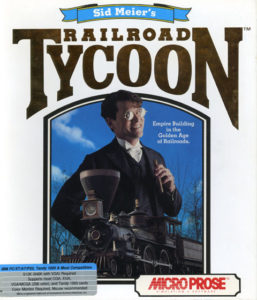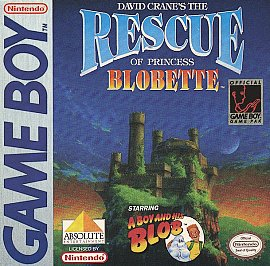Ah, romance.
Compelling romance subplots are tough to write at the best of times. Consider their place in linear media–how many otherwise strong films or novels suffer from an unconvincing, uncompelling, or tacked-on romantic element? Add in the complexities of interactive narrative and of course things often go badly.
But that’s no reason to eschew romantic storylines altogether. No one needs convincing that there’s a rich vein of material to be mined here. So what should we think about as game writers when we introduce romantic elements into our projects? What are the pitfalls to avoid and the game-specific challenges that need to be overcome?
I’ll be tackling these issues across at least two different posts–first analyzing non-branching games, then concentrating on romance in branching narrative (with possibly some other stops in-between). Before we get into either of those, however, let’s narrow our focus a little…
The Elephants in the Room
This is a big topic. We’re not talking about a lot of it. Specifically:

Our interest here is mainly games whose primary focus is not romance. If you’re writing a story-driven adventure focused on chronicling a specific romantic relationship, a party management game where pairing up individuals is your primary mechanic, a dating sim, or any other game in which removing the romantic aspect would leave you with little gameplay and story left, a lot of this advice may not apply. (A lot still will–just be sure to consider it in a different context.)
We’re also assuming that you want your romance to be a meaningful and well-constructed part of the narrative (if your romance is intended to have the weight of the relationship between Mario and Princess Peach, you hardly need me) and that you’re already comfortable writing romances in traditional media. If you’re still struggling with basic issues like how to pace a romance, how to make a romantic interest an engaging and compelling character in his or her own right, how to handle romantic dialogue, how to avoid gendered stereotypes, etc., you’ll find no help here.
We’re looking only at romantic relationships between the player character and non-player characters. If you’re figuring out how to deliver a strong narrative with NPCs romancing one another, you’ve still got a challenge–but it’s little different from making the player care about any relationship between two NPCs. The romance is entirely filtered through the player’s eyes, and matters mainly in how it relates to the protagonist. (This may be worth an article of its own at a later date.)
We won’t be talking much about audio, visual, or mechanical aspects of romance in narrative, though we’ll touch on these items in a few spots. There’s lots worthwhile to discuss here (you could easily fill an article or two on visual character design for romantic interests–whether to favor the gaze of players or player characters, and so forth); it’s just not our topic today.
We won’t be talking specifically about sex. Since we’re not worrying about romance-focused games and we’re assuming you can write well and tastefully already, handling sex scenes should be relatively easy compared to everything else.
We will be talking about romantic storylines of all stripes–not just “fantasy” romances. Nuanced, rocky, and even hurtful relationships are all good storytelling fodder, and we’ll highlight a few challenges specific to unhealthy or simply not-blazingly-positive romances.
The concept we’ll come back to again and again is this: Employ romance the way you would any other important theme within a larger narrative framework. The difference between integrating a romantic element and a horror element into your military shooter isn’t one of kind; yet players have special expectations of and particularly strong reactions to romantic elements that raise the stakes and the risk of derailing the narrative.
Non-Branching Games
Compared to branching narrative romances, romances in non-branching games are comparatively simple. But “simple” doesn’t mean “easy.” The challenges may be every bit as great.
(Note that I’m using the term “non-branching” instead of linear for this category so as to include, for example, open world games that lack branching storylines. One can argue whether the Assassin’s Creed or Grand Theft Auto games qualify as narratively linear, but if they don’t offer multiple story branches they belong here.)
In the AAA space, non-branching games have a fairly poor track record for handling romance. Too often, romance elements boil down to “you killed my dog” or a paper-thin “obligatory Hollywood romance subplot” that adds no real thematic or character depth to the work. These aren’t approaches that can be easily redeemed by smart implementation, but let’s assume you have loftier ambitions.
Consider the following:
Is this really a good idea? The overriding risk of implementing a romance in a non-branching game is this: Game narratives are most powerful when a player’s motivations and emotions sync with the player character’s, but love and attraction are hard to reliably reproduce in a player audience.
It’s one thing to make me (as a player) like or loathe a non-player character, but much harder to make me attracted to one (assuming I’m attracted to persons of that NPC’s gender at all). My ability to generally empathize with a protagonist in a romance or simply enjoy the relationship as engaging drama–as might apply in a book or film–is less important in a game than my ability to share the player character’s headspace.
Implement a romance poorly and you risk the player becoming frustrated and detached from the player character. “Why” (our theoretical player asks) “is my character spending so much time pursuing this awful (or merely not-to-my-taste) guy? I don’t want to do this. I want to go back to shooting aliens.”
If you think you’ve got a romance element for your narrative that’s worth the risk, there are ways to avoid or mitigate these problems. You don’t need to use all the tools below, and likely don’t want to–but individually, each is a way to smooth out the experience.
Establish a strong player character personality. So much of game writing is getting player “buy-in” by establishing expectations early on. If you intend to compel the player character into a romantic situation, make sure that the player understands from the start that she’s not free to project her own motivations and personality onto the player character–that the player character’s personality is very much predetermined, and that the player is as much accompanying as embodying him. The more control the player thinks she has over the character, the more frustrating it will be if her character does something she doesn’t want.
And make sure that the player character’s personality isn’t just well-realized on paper–convey the particulars in an unmistakable fashion! Broadly speaking, players will be a lot less resistant to a romance involving a Nathan Drake-style player character (a clearly defined personality) than a Gordon Freeman (silent and entirely player-projected). That said, for truly vague or passive protagonists, see “Make it One-Way” below.
 The more the player feels a sense of ownership over the player character (and by extension, the romance), the more likely the player is going to have complaints at some point when the romance plot moves forward without player control (“but I don’t even like him–why are we kissing?”). The downside of reducing ownership, of course, is that ownership is a powerful and valuable tool to improve player engagement; you need to make sure this tradeoff is worth the gain.
The more the player feels a sense of ownership over the player character (and by extension, the romance), the more likely the player is going to have complaints at some point when the romance plot moves forward without player control (“but I don’t even like him–why are we kissing?”). The downside of reducing ownership, of course, is that ownership is a powerful and valuable tool to improve player engagement; you need to make sure this tradeoff is worth the gain.
Establish a strong personality for the romantic interest. This goes hand-in-hand with the item above. In taking this approach, your goal is to convince the player that the player character and romantic interest obviously should be attracted to one another, based on their established personalities. It only makes sense, even if the player doesn’t actually like it. If your player is ever wondering “what does my character see in him / her?” then you’ve got a serious problem.
You may not be able to achieve emotional synchronization between the player character and the player, but you can at least get the player on-board intellectually (which in turn may lead to the sort of audience-protagonist sympathy you’d find in traditional media). This works well for rocky or doomed relationships, too–if the attraction is obvious and convincing, the player is more likely to run with the storyline rather than simply being frustrated by it.
How do you handle this in practice? Great dialogue helps–if the banter is funnier and flows easier between player character and romantic interest than with anyone else, or if player character and romantic interest share a unique interest no one else has, it’s a place to start. Don’t rely on physical appearance or some sort of vague, charismatic “presence” or mystique–if I can’t glance at the dialogue in a scene and come away thinking, “Man, I may not personally like the love interest, but he’d obviously be appealing to the protagonist!” then you haven’t gone far enough.
 Establish the romance as part of the story’s background. Declaring that the player character was already involved with his or her romantic interest before the game’s start helps with player buy-in–the player may not like it, but won’t question the characters’ pairing as would be possible with a romance kindled in-game.
Establish the romance as part of the story’s background. Declaring that the player character was already involved with his or her romantic interest before the game’s start helps with player buy-in–the player may not like it, but won’t question the characters’ pairing as would be possible with a romance kindled in-game.
That said, this isn’t an excuse not to do the groundwork–you still need to convince the player that these characters are a natural match. It’s just a little easier this way.
Make the romance engaging and enjoyable. Does it need to be said? Yes, it does. The more the romance is something I want to see–the more it’s funny, heartwarming, hot (though be careful with this one, given varied player orientations and interests), and so forth–the more I’m willing to buy into the romance and accept it as part of the story. Make me grin at two characters joking together; make me smile at two shy characters fumbling toward romance; make me laugh in shock and horror at the antics of two villains in love. If it’s fun for me, I assume it’s fun for the player character, and can give it a lot of leeway.
A lot of games fail on this particular point, presenting lovers or would-be lovers tragically separated; or relationships at their lowest ebb amid stress and tension. But such presentations don’t make the player want to rekindle the romance per se–at best, they make the player want to alleviate the characters’ pain. If you want me to want the romance, make the romance something worth wanting.
For “bad” romances, this method has its limits–if a relationship has profound flaws and is doomed from the start, you can’t make it entirely desirable–but it can also play an important role in emphasizing the good side of the equation. A bad romance without any redeeming qualities isn’t terribly plausible or terribly interesting.

Make the romantic interest impossible to dislike. This is a cheat I’m not really a fan of, but it can work: Scrub away the romantic interest’s rough edges, make sure she’s relentless supportive (but not servile or humorless), give her a sharp-but-inoffensive sense of humor, and never let her seriously disagree, lie, or put her needs above mine. Load her up with appeal and never give the player an excuse to dislike her.
The problem with this approach, of course, is that you’re not left with a particularly interesting character and you’ve exorcised most of your potential for genuine emotional drama. You’re giving the player a sugar rush, which is rarely a boon to storytelling intended to carry real weight.
I won’t lie: people love sugar rushes. But you’re aiming higher than that, right?
Don’t make the romance an obstacle. Conversely, be exceedingly careful about making your romance into an obstacle to–well, to pretty much anything the player may want. There’s little that irritates a player more than something that gets in his or her way. Does it impede progress in the main storyline (a mission in which I need to rescue my lover instead of killing the alien boss)? Does it keep me from gameplay (lengthy romantic cutscenes with no direct bearing on the plot, or a romantic interest who wants to keep me out of danger)? Does it frustrate my play experience (escort missions!) When you make your romance into an obstacle, you risk souring the player on the romance as a whole for reasons not true to the narrative.
 Angst, no matter how appropriate outside of games, is another obstacle and difficult to deploy effectively–it’s enormously difficult to get players and player characters mooning over an NPC or a lost love together, and it’s difficult to give a player much to do in this regard. Games are active experiences, and while emotionally anguished player characters are fine, you’ll have an easier time giving the player something to directly work toward.
Angst, no matter how appropriate outside of games, is another obstacle and difficult to deploy effectively–it’s enormously difficult to get players and player characters mooning over an NPC or a lost love together, and it’s difficult to give a player much to do in this regard. Games are active experiences, and while emotionally anguished player characters are fine, you’ll have an easier time giving the player something to directly work toward.
That’s not to say you can never deploy romance as an obstacle, but that tactic tends to work best when the player is thoroughly sold on the concept already. If I have to change course to rescue my romantic interest, I’d better be really invested in that character. (That’s not the player character who needs to be invested–that’s me, the player.)
Integrate the romance into gameplay. This relates closely to the previous points (see also “Remember what your game is really about,” below). If your romance has no impact on gameplay, it’s almost, by definition, an obstacle to the game’s primary experience.
That said, “integration” and “impact” can mean a wide variety of things. Is the player character’s romantic interest a helpful sidekick character, an enjoyable and consistent presence during gameplay? Is the romantic interest a voice providing advice or instructions? A fun enemy to be battled in boss encounters? Are gameplay levels representative of different levels of the romantic interest’s soul? Are “relationship mechanics” built into play, where the more the player takes certain actions (protecting the sidekick romance character in gameplay, collecting flowers, whatever) the stronger the relationship becomes and the more bonuses are stacked onto the player character?
Be very careful if you’re using a romance plot to contrast the primary plot of a game, treating it as a passive gameplay experience that the player returns to between “real” game segments. Try not to make romance a speed bump. If you want my tough-as-nails soldier player character to return to her husband during downtime between missions, don’t just make these passive cutscenes–find a way to engage the player and make the experience relevant to the rest of the game.
Make it a one-way street. Or… do things very differently. This one works well with relatively undefined player characters–silent protagonists and the like–and gets increasingly awkward the more the player character develops a true personality. A romantic interest who adores the player character can be a powerful thing–players generally respond well to flattery and adulation and a sense of being wanted, even if they don’t necessarily wish to respond in kind. I’m probably going to at least be sympathetic toward a well-realized and intriguing character who clearly is falling in (non-creepy, non-stalker-ish) love with me.
Of course, you need to justify why the player character doesn’t respond (whether positively or negatively). For silent protagonists in relatively subtle “relationships,” you may be right at home; for more active protagonists, you may need to put an actual communications barrier in place (the relationship is literally one-way, with the romantic interest able to speak to the player character but not vice-versa).
As mentioned, you really want to be careful to avoid a creepy vibe with this approach. For that reason, I’d absolutely recommend not trying this in reverse–an adoring player character and a passive / silent / dead romantic interest is very likely going to seem overbearing.
Make me feel my romantic interest’s absence. Romance is intense. If you want to convey that intensity, make sure the player feels when the player character and romantic interest are apart.
Assuming the romance is generally positive, emphasize those positive traits when the romantic interest is present and emphasize the opposite elsewhere. e.g., if I’ve got a romantic interest sidekick character and the relationship is defined by excitement and one-upsmanship, make sure the missions where we’re together feel appropriately exciting and over the top; whereas those without the romantic sidekick might feel somewhat stifling, lonely, or overly cautious. Make sure many of my best times (however you define “best”) are with the romanced character so that I always want to get back to him or her. You don’t need the player character to mope when he’s alone if the joy of the active relationship is powerful enough; the player will make those comparisons herself.
If the romance is ultimately harmful, go the opposite route: No matter what enjoyable aspects life with the romanced character brings, I should feel better when the character isn’t around.
The relationship is what you show. If all you depict of the relationship is arguments, nagging, or one partner getting into trouble and frustrating the other, then that’s what defines the relationship. You can’t convey a healthy, vibrant, warm partnership if you spend most of your time with two characters displaying something else entirely; make sure that whatever the core of your relationship is, that’s the primary aspect in a majority of scenes.
Remember that plausibility isn’t likability. Returning to a point we’ve touched on several times: Just because you’ve convinced me that a relationship between player character and NPC is plausible doesn’t mean that I’m going to like the romance or the romantic interest. You still need to do all the groundwork you’d need to do to make me like any character–establishing character, agency, and likability certainly isn’t less important with a character who’s part of a romance.
If you’re trying to build a “bad” relationship, be careful not to simply end up with an irritating one–you very likely want a relationship the player is torn over, uncertain whether he or she really wants it to end. In this case, you still probably need to emphasize the positives over the negatives (in both the relationship in general and the romantic interest)–unlike in real life, it doesn’t take much to sour a player on a relationship; the player hasn’t invested much in it, so why stick around for something bad?
Remember what your game is really about (not romance). If you’re making a first-person shooter, your game is probably about violence. If you’re making an RPG, it might be about exploration or ascending to power. Your game is about whatever your core mechanics are about, flavored and directed or subverted by your narrative. Which means, in most cases, your game is not about romance.
Therefore, make sure that your inclusion of romance in your game fits neatly within–and is subsidiary to–your larger themes. The idea that the power of love wins over all else at the end of your shooter probably isn’t going to fly–you just built 10 hours of gameplay about how the power of shooting people is what wins, and threw a detached romantic subplot off to the side and expected me to care.
Whatever reason you have for including a romance in your game, it needs to have an appropriate place within your larger narrative. Don’t put more weight on it than it can support; and remember that what it can support is defined largely by its integration into gameplay (as we discussed above).
 Go vague and archetypal. Want a way to ignore almost all of the advice above and still pull off a successful romance? I’m sure there are methods. Maybe you can play on the power of archetypes–a game like Passage manages to generate emotion without falling back on crutches like “actual characters.” Or maybe you can can lean on symbolism instead. Maybe your “romance” is entirely subtext, and the text allows for an entirely platonic interpretation of a player character and NPC relationship. Maybe procedural generation and clever mechanics can create a compelling romance in the context of a roguelike!
Go vague and archetypal. Want a way to ignore almost all of the advice above and still pull off a successful romance? I’m sure there are methods. Maybe you can play on the power of archetypes–a game like Passage manages to generate emotion without falling back on crutches like “actual characters.” Or maybe you can can lean on symbolism instead. Maybe your “romance” is entirely subtext, and the text allows for an entirely platonic interpretation of a player character and NPC relationship. Maybe procedural generation and clever mechanics can create a compelling romance in the context of a roguelike!
This post spends a lot of time looking at traditional romances in games with mainstream storytelling sensibilities. But there are whole worlds left to discover. Maybe innovation is worth a shot for your project?
Allow branching after all. Finally, here’s something of a Hail Mary pass: Even in an otherwise non-branching game, there’s nothing stopping you from making a romance optional–by giving the player a way to “opt in” or “opt out” of the romance, through whatever method is appropriate to the gameplay. This doesn’t mean you don’t need to make the romance compelling, of course, but it lets your players escape a subplot that doesn’t appeal to them (so long as you aren’t tying the romance to exclusive content or mechanical benefits).
Such a romance, of course, can’t play an enormous role in your narrative–otherwise, it couldn’t be made optional. And we’ll get into all the particulars of more complex branching romances–like what variety of romance options to present, setting player expectations, and offering rewarding non-romance content–another time.
